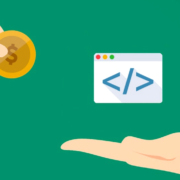1031 exchanges, also known as like-kind exchanges, offer valuable tax advantages for investors in the oil sector. By deferring capital gains taxes, investors can reinvest proceeds from the sale of oil assets into new properties, thereby fueling growth and maximizing returns. In this comprehensive guide, we explore strategies for optimizing 1031 exchanges in the oil sector to capitalize on tax benefits and enhance investment opportunities.
Understanding 1031 Exchanges in the Oil Sector
A 1031 exchange is a powerful tax-deferral strategy that allows investors to swap one oil asset for another without triggering immediate capital gains taxes. This provision, outlined in Section 1031 of the Internal Revenue Code, applies to a wide range of properties, including oil wells, mineral rights, and leases. By reinvesting proceeds from the sale of oil assets into similar properties, investors can defer taxes and maintain liquidity for future investments.
Benefits of 1031 Exchanges for Oil Investors
For investors in the oil sector, 1031 exchanges offer several key benefits:
Tax Deferral: By deferring capital gains taxes, investors can retain more capital to reinvest in oil assets, leading to greater portfolio growth over time.
Portfolio Diversification: 1031 exchanges enable investors to diversify their oil holdings by exchanging properties in different locations or with varying production profiles, reducing overall risk.
Enhanced Cash Flow: Reinvesting proceeds from the sale of oil assets into income-producing properties can generate steady cash flow and support long-term financial goals.
Estate Planning Benefits: 1031 exchanges can be utilized as part of a comprehensive estate planning strategy to transfer oil assets to heirs with reduced tax liability.
Strategies for Optimizing 1031 Exchanges in the Oil Sector
To maximize the benefits of 1031 exchanges in the oil sector, investors can implement the following strategies:
Timing the Exchange: Proper timing is crucial for a successful 1031 exchange. Investors should initiate the exchange before closing the sale of the relinquished oil property and adhere to strict timelines outlined by the IRS, including the identification and acquisition periods.
Identifying Like-Kind Properties: To qualify for a 1031 exchange, the replacement oil property must be of like-kind to the relinquished property. While the IRS provides broad guidelines for like-kind exchanges in the oil sector, investors should seek professional advice to ensure compliance and maximize tax benefits.
Utilizing Qualified Intermediaries: Engaging a qualified intermediary (QI) is essential for facilitating 1031 exchanges and ensuring compliance with IRS regulations. QIs play a critical role in structuring the exchange, holding proceeds from the sale of the relinquished property, and facilitating the acquisition of replacement properties.
Leveraging Reverse Exchanges: In certain situations, investors may opt for a reverse exchange, wherein they acquire the replacement oil property before selling the relinquished property. Reverse exchanges offer flexibility in competitive markets and enable investors to secure desirable properties without risking missed opportunities.
Strategic Portfolio Management: Successful 1031 exchanges require careful consideration of investment objectives, risk tolerance, and market dynamics. Investors should evaluate potential replacement properties based on their production potential, lease terms, geological characteristics, and future development opportunities.
Tax Planning and Consultation: Due to the complexity of tax regulations governing 1031 exchanges, investors should seek advice from qualified tax professionals and legal experts specializing in oil and gas transactions. Proper tax planning can help mitigate risks, maximize tax benefits, and ensure compliance with IRS guidelines.
Case Studies: Real-World Applications of 1031 Exchanges in the Oil Sector
To illustrate the practical implementation of 1031 exchanges in the oil sector, let’s examine two hypothetical case studies:
Case Study 1: Diversification and Portfolio Expansion
An oil investor owns a portfolio of producing oil wells in a mature oil field but seeks to diversify into emerging shale plays with higher growth potential. By leveraging a 1031 exchange, the investor sells a portion of their mature oil assets and reinvests the proceeds into undeveloped acreage in a promising shale formation. This strategic move allows the investor to capitalize on future production growth and enhance overall portfolio value while deferring capital gains taxes.
Case Study 2: Estate Planning and Wealth Preservation
A family-owned oil company faces the challenge of transitioning ownership to the next generation while minimizing tax implications. Through a series of 1031 exchanges, the company repositions its oil assets into income-producing properties with favorable tax treatment. By structuring the exchanges strategically, the company preserves wealth, minimizes tax liabilities for heirs, and ensures the long-term sustainability of its oil business.
1031 exchanges offer valuable tax benefits for investors in the oil sector, enabling them to defer capital gains taxes and reinvest proceeds into new properties. By implementing strategic planning, leveraging qualified intermediaries, and adhering to IRS guidelines, investors can optimize 1031 exchanges to enhance portfolio growth, diversification, and wealth preservation. With proper execution and professional guidance, 1031 exchanges serve as a powerful tool for unlocking opportunities in the dynamic landscape of the oil industry.
If you have further questions related to Strategies for optimizing 1031 Exchanges, feel free to contact us here.










